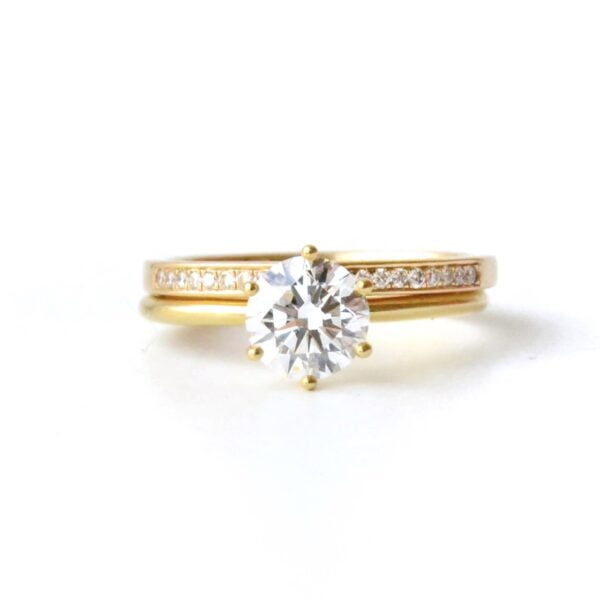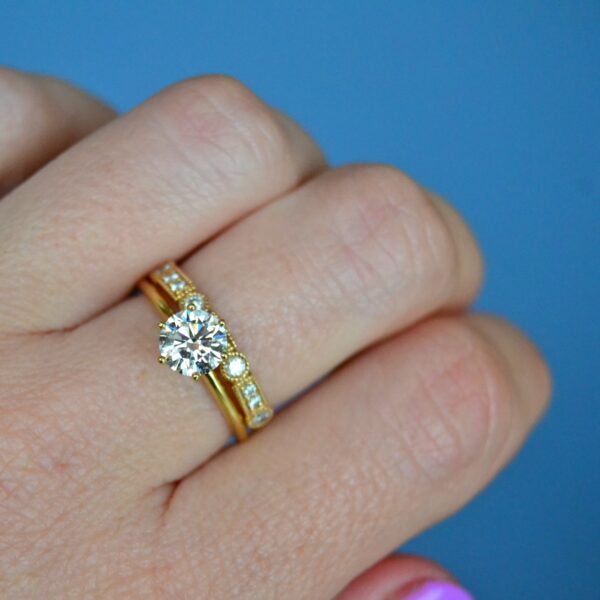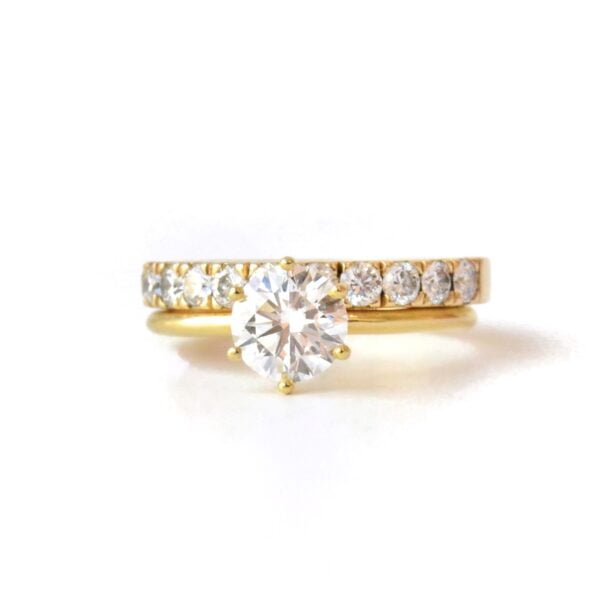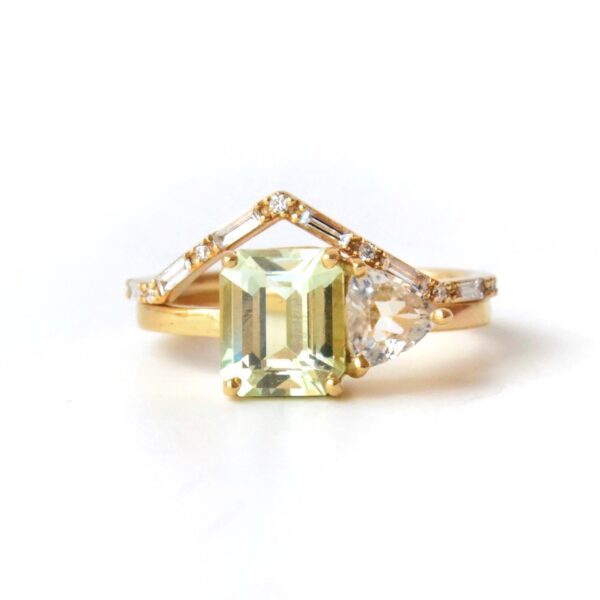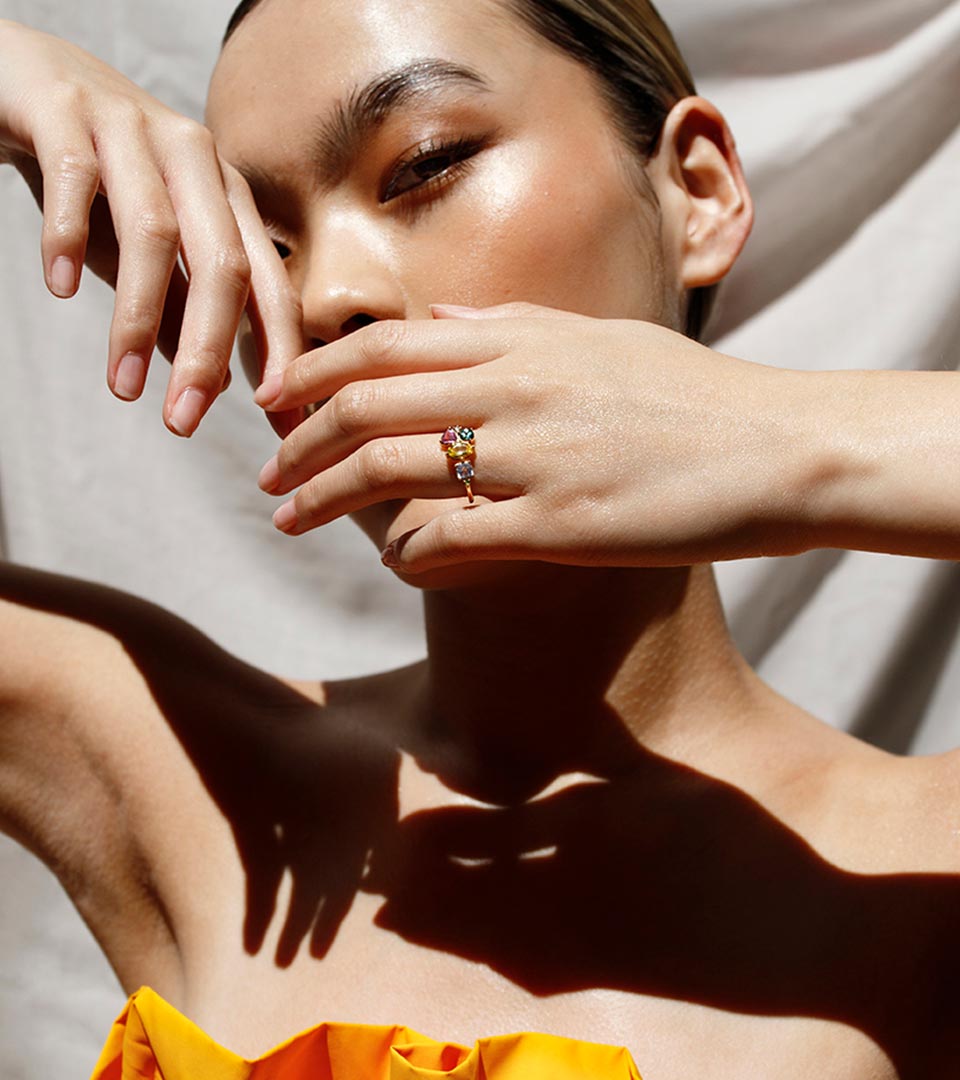No items in the basket.
There is a common misconception that sapphires only come in the color blue, however this could not be further from the truth! The wonderful world of sapphires is colorful and vast – these stones can come in virtually every color of the rainbow.
Sapphires allow you to have something that is completely unique and one of a kind, as no one sapphire is the same as the next. The vast array of choice in terms of color means that you can always find something that fits your specific style.
One of the most incredible things about sapphires is that, if untreated, their intense color can be completely natural. Our team works with sapphires everyday and we are all astounded by what nature can create!
In this post we will show you all the different hues that sapphires can come in. If you want to dive deeper into the topic and learn about how color effects value and the science behind the colors, you can download our E-book, “The Colorful World Of Sapphires,” here.

BLUE SAPPHIRES
Everyone knows that sapphires come in the color blue. In fact, they are considered one of the more traditional colored sapphires. The most notable producer of fine blue sapphires is Sri Lanka or “Ceylon” as referred to within the trade (Ceylon was the former name of the country). They can also be found in Madagascar, Kashmir and Nigeria, among other places.

PINK SAPPHIRES
Pink is one of the more popular colors when it comes to sapphires, and for good reason! These incredible stones come in an array of hues from light, pastel pink to vibrant hot pink – and everything in between. Pink sapphires are most popularly found in Sri Lanka, Myanmar and East Africa.

YELLOW SAPPHIRES
Yellow sapphires can be found in Thailand, Australia, Tanzania and Madagascar. However, Sri Lanka is the primary source for these beautiful stones. The most sought after yellow color for a yellow sapphire is known as canaray, which is a medium, vibrant tone.

GREEN SAPPHIRES
Green sapphires are mined in several continents, however, Sri Lanka produces the rarest green sapphires — often featuring a vibrant green color. On occasion, green sapphires can be confused with emeralds, however there is quite a big difference between the two. Emerald rank lower on Moh’s Scale of Hardness, meaning they are more susceptible to scratches and chipping. Sapphires on the other hand have a rating of 9, meaning that they are strong enough to withstand everyday wear without being damaged.

BI-COLOR SAPPHIRES
Bi-color sapphires are stones that contain two different colors, which occurs through color zoning. Color zoning is when conditions of the trace elements change during the crystal formation. These gemstones can range from dra- matic color zoning with two very different colors present in the stone, to slight color zoning which shows two very similar, but slightly off colors in one stone.

TEAL SAPPHIRES
Teal sapphires contain two of nature’s most majestic colors: deep ocean blue and vivacious green. Strictly speaking gemologically, teal sapphires don’t exhibit color change under different sources of light. However, their reflection patterns in natural and artificial lights produce a partial, subtle change.

COLOR CHANGING SAPPHIRES
Color change sapphires are stones that exhibit different colors in different lighting conditions, giving you two very exciting colors under the right conditions. When gem experts judge Color-changing sapphires, they rank the color change as weak, moderate, or strong. The strength of the stone’s color change is the most important quality factor affecting its value, followed then by the actual color of the stone.

PURPLE SAPPHIRES
Purple sapphires are sometimes referred to as violet or lavender, and are slightly less common than other colors. They come in a beautiful range of purple tones, and because of this, they rarely have the need for color enhancing treatments.

BLACK SAPPHIRES
Black sapphire is a nearly opaque stone whose color is so dark that it appears to absorb all light that enters the gemstone. Because of their deep hue, black sapphires do not reflect light as well as other colored sapphires. However, they are still an incredibly striking and unique choice in stone for any style of jewellery.

PEACH SAPPHIRES
Peach sapphires hold a very special place within the category of unique and rare sapphires. They have an array of hues, ranging from pinker tones to orange tones. Clarity is a very important element for peach sapphires, as the light tones of pastel shades easily reveal inclusions. Any presence of cloudiness can dull the color and brilliance of the stone.

ORANGE SAPPHIRES
Orange sapphires are quite rare, and are some of the most difficult sapphires to find in a natural, untreated state.Of all orange sapphires seen in the marketplaces of websites and jewellery stores, 99.99% will be treated with extreme heat to produce the vibrant orange color. That is why a natural, unheated orange sapphire is considered so rare.

PADPARADSCHA SAPPHIRES
Padparadscha sapphires are one of the rarest of sapphires, and contain a unique mix of orange and pink. With Padparadschas, a medium saturation is often more highly regarded, since these gems are expected to be pastel in color and tone.

RUBIES
You may be wondering why rubies have made the list of colorful sapphires… well this is because rubies technically are a sapphire! Sapphires and rubies are made up of the same element called corundum. The only difference between the two is the color. When a corundum is red, it is classified as a ruby, and when it’s another color it is called a sapphire.

GREY & WHITE SAPPHIRES
White sapphires are completely colorless sapphires, where as grey sapphires are near colorless, with traces of black throughout. White sapphires can be used as an alternative to diamonds. They rank at an 9 on the Moh’s hardness scale, just below diamonds. 9 is still a high score and means that sapphires are durable enough for everyday wear.

SOURCING SAPPHIRES
At Anpe Atelier, we are source our sapphires from our trusted gem traders in Sri Lanka, with whom we work together with everyday. This means that we are able to find sapphires in the exact color, tone and hue that you are looking for. Contact us to start the process!
If you are interested in learning more about the process of buying sapphires, then have a read through The Ultimate Sapphire Buying Guide!
New in
Our newest colorful collection palette.
Scroll for more products



